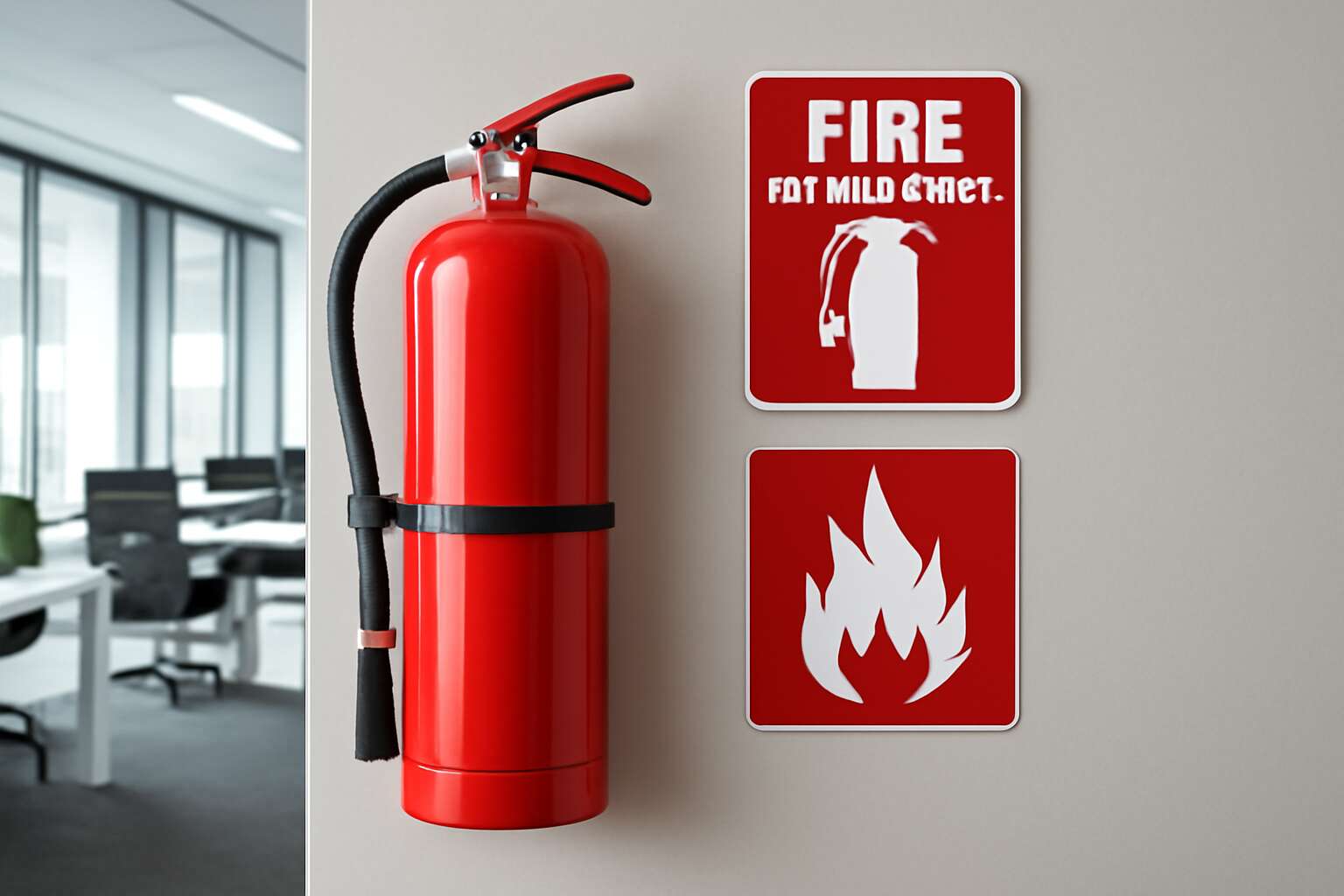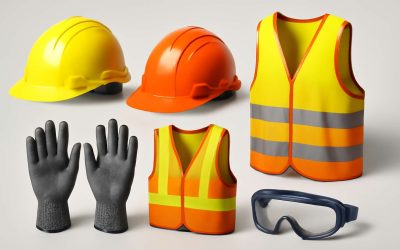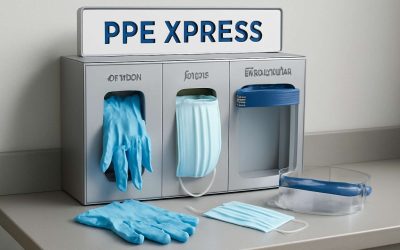Understanding Safety Equipment: Protecting Lives and Property
What Is Safety Equipment and Why It Matters
Imagine a world where fires are nothing more than distant memories—or at least a minor inconvenience, like finding a missing sock. The secret lies in understanding safety equipment like fire extinguisher, which acts as the first line of defense against blazing chaos. These devices are not just bureaucratic box-tickers; they are vital guardians of lives and property, especially in South Africa’s bustling commercial hubs and cozy homes alike.
Safety equipment like fire extinguisher isn’t just about compliance; it’s about peace of mind. When seconds matter, having the right safety equipment in place can mean the difference between a controlled blaze and a catastrophe. From offices to factories, the strategic placement of fire extinguishers ensures that chaos doesn’t win the day. Because let’s face it, in the grand scheme of things, a little preparedness goes a long way—plus, it keeps the insurance folks happy.
Types of Safety Equipment Commonly Used
In the delicate dance of safeguarding our lives and property, understanding safety equipment like fire extinguisher is paramount. These devices transcend mere accessories; they are the silent guardians standing vigilant against the chaos of fire. In South Africa’s vibrant commercial landscapes and intimate homes, having the right safety equipment can be the difference between devastation and recovery.
There are several types of safety equipment commonly used to combat fire hazards. For instance, portable fire extinguishers come in various classes, designed to extinguish specific types of fires. Knowing which one to deploy can save precious seconds and lives. From foam extinguishers for flammable liquids to CO2 variants for electrical fires, each piece plays a pivotal role in comprehensive fire safety planning.
Ensuring optimal protection involves strategic placement and regular maintenance of safety equipment like fire extinguisher. This is not merely about compliance but about fostering a culture of preparedness. When every second counts, the right safety equipment becomes a vital shield, transforming chaos into control and tragedy into mere memory.
Importance of Proper Safety Equipment Maintenance
In the realm of safety, the true power of safety equipment like fire extinguisher lies not just in its presence, but in its reliability when every second counts. Proper maintenance transforms a simple device into a formidable guardian, ready to quell the flames before they spiral out of control. Neglecting this critical aspect can render even the most advanced safety equipment ineffective, turning a potential lifesaver into a useless relic.
Consistent inspection and servicing are essential to ensure that safety equipment like fire extinguisher functions flawlessly. This includes checking the pressure gauges, ensuring there are no leaks, and verifying the accessibility and visibility of the device. Regular maintenance fosters a culture of preparedness and confidence, empowering individuals to act swiftly in emergencies.
- Visual inspections for corrosion or damage
- Ensuring the safety pin and seal are intact
- Replacing or recharging expired or used-up fire extinguishers
By prioritising proper safety equipment maintenance, South African businesses and households reinforce their defenses against unexpected fire hazards. It’s a small but mighty step toward safeguarding lives and property, turning safety from a mere policy into a steadfast reality. Remember, a well-maintained fire extinguisher isn’t just equipment—it’s a lifeline in disguise, ready to spring into action when danger strikes.
Fire Safety Equipment: Essential Tools for Emergency Preparedness
Types of Fire Safety Equipment
In the realm of emergency preparedness, safety equipment like fire extinguisher play a pivotal role in safeguarding lives and property. Imagine a bustling South African office or a lively restaurant—fire hazards can emerge unexpectedly, and having the right tools at your fingertips can make all the difference. Fire safety equipment encompasses more than just fire extinguishers; it includes a diverse array of essential tools designed to combat various types of fires swiftly and effectively.
Among the most vital are fire blankets, which smother flames in their infancy, and smoke alarms, alerting occupants to danger long before flames become visible. The spectrum also includes fire hoses for larger-scale incidents and specialized extinguishers tailored for electrical or chemical fires. Each piece of safety equipment like fire extinguisher is engineered to meet specific emergency needs, ensuring rapid response and minimizing damage. In environments where safety is paramount, having a comprehensive arsenal of fire safety equipment can transform chaos into control.
Choosing the Right Fire Extinguisher
In the realm of emergency preparedness, selecting the right fire safety equipment can spell the difference between chaos and control. Fire safety equipment like fire extinguishers are the frontline guardians against the destructive force of flames, yet not all extinguishers are created equal. To truly safeguard your environment—be it a bustling office in Johannesburg or a vibrant restaurant in Cape Town—understanding which type of fire extinguisher suits specific hazards is essential.
For example, an ABC powder extinguisher is versatile, tackling common combustibles, electrical fires, and flammable liquids. Meanwhile, specialized extinguishers like CO2 are perfect for electrical fires, preventing further damage. Recognizing the specific needs of your space ensures rapid response in critical moments. When choosing safety equipment like fire extinguisher, it’s vital to consider factors such as fire class, size, and accessibility. An informed choice transforms safety from a mere precaution into a proactive shield—empowering your team to react with confidence when seconds count.
Installation and Accessibility of Fire Safety Devices
In the realm of emergency preparedness, the installation and accessibility of safety equipment like fire extinguishers can be the pivotal difference between chaos and control. Strategic placement ensures that these vital tools are within reach when seconds matter most, transforming a potential disaster into a manageable incident. Imagine a bustling Johannesburg office or a lively Cape Town restaurant—each space demands a tailored approach to fire safety equipment like fire extinguishers, ensuring quick response times and effective suppression.
Proper installation isn’t just about mounting a device on the wall; it’s about creating a safety network that seamlessly integrates into daily routines. Accessibility is key—fire safety equipment like fire extinguisher should be clearly visible, unobstructed, and easy to operate. To enhance safety, consider implementing an organized system of placement based on fire hazard zones. For example, in kitchens or electrical rooms, specialized extinguishers like CO2 are essential. Remember, a well-placed fire extinguisher isn’t just a safety measure—it’s a vital safeguard that empowers staff and visitors to react swiftly in moments of crisis.
Inspection and Maintenance Tips
In the realm of emergency preparedness, the true power of safety equipment like fire extinguishers lies not just in their presence but in their readiness to act. Regular inspection and meticulous maintenance transform these essential tools from mere objects into vigilant guardians standing guard against chaos. A neglected fire extinguisher is akin to a sword rusted in its sheath—powerless when most needed.
To ensure optimal performance, routine checks should include verifying pressure levels, examining for corrosion, and ensuring seals are intact. Proper maintenance extends beyond visual inspection; it involves scheduled professional servicing to keep safety equipment like fire extinguishers in peak condition. Implementing a systematic inspection schedule guarantees that these vital tools are always prepared—ready to unleash a swift response at the first sign of danger.
Remember, an organized approach to safety equipment maintenance not only preserves their functionality but also instills confidence among staff and visitors. When every fire safety device is meticulously cared for, it becomes more than just equipment—it becomes an unwavering promise of safety amid the unpredictable storms of emergency scenarios.
Additional Essential Safety Equipment for Various Environments
Personal Protective Equipment (PPE)
Safety equipment like fire extinguisher are crucial, but they are just part of the larger safety puzzle. In any environment—be it industrial, commercial, or even residential—personal protective equipment (PPE) plays a vital role in safeguarding individuals. PPE such as helmets, gloves, eye protection, and respiratory gear can prevent injuries and reduce risks in high-stakes situations. When properly used, these items can mean the difference between minor mishaps and serious accidents.
In specialized environments, additional safety equipment becomes essential. For example, chemical plants require eye wash stations and chemical-resistant suits, while construction sites benefit from high-visibility clothing and ear protection. To keep safety standards high, some workplaces implement a comprehensive PPE program, which might include:
- Protective helmets
- Safety goggles or face shields
- Hearing protection
- Respirators or masks
- High-visibility vests
Investing in the right safety equipment like fire extinguisher and PPE ensures employees are protected from unpredictable hazards, fostering a safer environment for everyone involved.
Emergency Exit Signage and Lighting
In the chaos of an emergency, seconds count—and clear guidance can be the difference between chaos and safety. That’s where emergency exit signage and lighting step into the spotlight. In South Africa’s bustling workplaces, these safety features are not just optional add-ons; they are vital components of the safety equipment like fire extinguisher arsenal. Properly illuminated exits and prominently displayed signs ensure everyone can find their way out, even when the smoke starts to obscure vision or power outages plunge the area into darkness.
Effective emergency lighting isn’t just about brightening pathways; it’s about creating a safe environment that minimizes panic and confusion. For example, photoluminescent signs that glow in the dark can serve as silent heroes during blackouts. Meanwhile, well-placed exit signs, preferably with international symbols, cut through the chaos with clarity. In high-risk environments, combining these with safety equipment like fire extinguisher ensures a comprehensive approach to safety—because when disaster strikes, every second saved counts.
First Aid Kits and Supplies
In the intricate dance of safety, having the right tools at your fingertips can turn chaos into calm. Beyond fire extinguishers and emergency exit signage, additional essential safety equipment such as first aid kits and supplies are the silent guardians in various environments. A well-stocked first aid kit becomes a beacon of hope when minor injuries strike, providing immediate relief and preventing small mishaps from escalating into emergencies.
For workplaces, construction sites, or even bustling retail outlets, the importance of accessible first aid supplies cannot be overstated. They serve as the first line of defense, ensuring that help is swift and effective. Consider the following essentials to keep in mind:
- Antiseptic wipes and creams
- Sterile bandages of various sizes
- Scissors and tweezers
- Disposable gloves
- Eyewash solution for eye injuries
In the grand tapestry of safety, each element—be it a fire extinguisher or a comprehensive first aid kit—complements the other, weaving a resilient shield around personnel and property. When carefully curated and maintained, these safety equipment like fire extinguisher and supplies forge a seamless safety web, ready to catch any unforeseen fall.
Security and Surveillance Equipment
In the realm of comprehensive safety measures, security and surveillance equipment often serve as the vigilant eyes that never blink. These tools act as an invisible yet formidable barrier, deterring potential threats and providing real-time monitoring. In environments ranging from industrial complexes to retail outlets, the strategic placement of cameras, motion detectors, and alarm systems can be the difference between chaos and control.
Beyond the obvious, the integration of advanced security solutions—such as CCTV systems, access control systems, and intrusion alarms—creates a layered defense. These elements work in harmony with safety equipment like fire extinguisher to forge a resilient safety web. For instance, surveillance cameras not only monitor but also record incidents, assisting in investigations and enhancing workplace safety protocols.
- High-definition CCTV cameras
- Motion detection sensors
- Alarm and notification systems
- Access control panels
Investing in such security and surveillance equipment amplifies the protective network, ensuring that both personnel and property are shielded from unforeseen threats. When seamlessly integrated with other safety equipment like fire extinguisher, this holistic approach transforms a mere safety protocol into an unassailable fortress of preparedness and resilience.
Regulations and Standards for Safety Equipment
National and International Safety Standards
In the labyrinth of safety, regulations and standards act as the guiding stars that illuminate the path toward secure environments. For safety equipment like fire extinguishers, compliance with both national and international standards ensures that these vital devices perform flawlessly when their moment is most critical. South Africa adheres to standards set by the SABS (South African Bureau of Standards), which align with global benchmarks, creating a tapestry of safety woven with precision and accountability.
International safety standards, such as those from the ISO (International Organization for Standardization), mandate rigorous testing and certification processes. These criteria are designed to guarantee that safety equipment like fire extinguisher not only meets but exceeds expectations during emergencies. For organizations, understanding and implementing these standards isn’t merely regulatory compliance — it’s a moral commitment to protect lives.
- ISO 9001 for quality management systems
- ISO 3864 for safety signs and symbols
- SANS 1475 for portable fire extinguishers in South Africa
By aligning safety practices with these standards, companies foster a resilient environment where safety equipment like fire extinguisher becomes more than just a device — it becomes a beacon of preparedness and trust. In a world where safety cannot be compromised, standards serve as the unseen guardians of peace of mind.
Mandatory Safety Equipment Requirements
In the high-stakes world of safety, regulations and standards are not just bureaucratic hoop-jumping—they are the backbone of reliable safety equipment like fire extinguishers. South Africa’s adherence to the SABS (South African Bureau of Standards) ensures that safety equipment meets rigorous national benchmarks, which are meticulously aligned with global norms. This synergy guarantees that when a fire sparks unexpectedly, your fire extinguisher won’t just be decorative—it’s ready to perform.
International standards, such as those from the ISO (International Organization for Standardization), set the bar even higher. These guidelines demand strict testing and certification processes, making sure safety equipment like fire extinguishers not only meet but surpass expectations. For organizations, compliance isn’t just a box to tick; it’s a moral obligation to safeguard lives and property. To put it simply, ignoring these standards risks turning your safety equipment into a useless paperweight when it’s needed most.
Mandatory safety equipment requirements often include:
- Properly rated fire extinguishers according to SANS 1475
- Clear signage and accessibility standards
- Regular inspection and maintenance protocols
By weaving these standards into everyday safety practices, businesses cultivate a resilient environment where safety equipment like fire extinguishers acts as a trusted guardian—ready to spring into action at a moment’s notice. After all, in a world where safety cannot be compromised, regulations serve as the invisible guardians of peace of mind—and perhaps a few saved lives along the way!
Certification and Compliance
In the realm of safety, certification and compliance are not mere formalities—they are the foundation of trust in safety equipment like fire extinguishers. South Africa’s adherence to the South African Bureau of Standards (SABS) ensures that each piece of safety equipment meets stringent national benchmarks, harmonized with global norms. This alignment guarantees that when fire strikes unexpectedly, your safety equipment like fire extinguisher is ready to act, not just sit idle on a wall.
International standards, such as those from the ISO (International Organization for Standardization), elevate safety requirements even further. These guidelines impose rigorous testing and certification processes, ensuring safety equipment like fire extinguishers surpass basic expectations. For organizations, compliance isn’t simply a legal obligation but a moral duty to protect lives and property. Ignoring these standards risks rendering safety equipment like fire extinguishers ineffective when it matters most.
- Proper certification according to SANS 1475
- Clear signage and accessible placement
- Regular inspection and maintenance routines
By embedding these standards into daily safety protocols, businesses foster an environment where safety equipment like fire extinguishers functions as a dependable guardian—ready to be relied upon at a moment’s notice. In South Africa’s diverse landscapes—from bustling urban centers to remote rural communities—adherence to regulation is the heartbeat of resilience and peace of mind.
Best Practices for Safety Equipment Usage and Training
Proper Training for Fire Safety and Equipment Use
Ensuring proper usage of safety equipment like fire extinguisher is not just a matter of compliance—it’s a matter of life and death. In high-stakes environments, quick and confident action can mean the difference between catastrophe and safety. That’s why comprehensive training is essential for anyone entrusted with fire safety responsibilities. Well-trained personnel not only understand how to operate fire safety equipment effectively but also recognize the most common mistakes that could render safety equipment like fire extinguisher useless in a crisis.
Implementing best practices for safety equipment usage involves regular drills, clear signage, and accessible fire safety devices. For example, conducting periodic fire drills helps embed muscle memory, ensuring that employees react instinctively when it counts. Remember—safety equipment like fire extinguisher should always be kept in visible, unobstructed locations and checked routinely to confirm functionality. When everyone knows their role and the proper procedures, the risk of panic diminishes, turning what could be a chaotic situation into a controlled response.
Regular Safety Drills and Audits
In the realm of fire safety, complacency is an unforgivable luxury. Even the most advanced safety equipment like fire extinguisher can become useless if not wielded with precision and confidence. Best practices for safety equipment usage emphasize regular training, ensuring that each team member is not just familiar but fluent in emergency protocols. When employees understand the nuances—such as the correct angle of discharge or the importance of aiming at the base of the flames—they become an invaluable line of defense.
Complementing this knowledge are routine safety drills and audits that serve as a litmus test for readiness. These exercises transform theoretical understanding into muscle memory, reducing hesitation during actual crises. Consider implementing a schedule that includes:
- Monthly fire drills to reinforce quick response times
- Quarterly audits of fire safety devices like fire extinguisher to ensure operational integrity
By maintaining a rigorous cadence of training and inspections, organizations foster an environment where safety equipment like fire extinguisher is seamlessly integrated into the fabric of everyday operations—ready to act when calamity strikes, rather than gathering dust and cobwebs in forgotten corners.
Updating Safety Equipment as Per Latest Guidelines
In the intricate dance of safety, mastery over safety equipment like fire extinguisher is not merely a matter of familiarity but a testament to disciplined vigilance. As fire safety standards evolve, so too must the protocols surrounding the updating and proper utilization of this vital safety equipment. Adherence to the latest guidelines ensures that each device functions at peak efficacy, transforming potential chaos into controlled response. Regularly reviewing manufacturer instructions and aligning with national safety standards can mean the difference between containment and catastrophe.
Training sessions that focus on the nuanced application of fire safety equipment reinforce confidence and precision among staff. Emphasizing the correct methods—such as the P.A.S.S. technique (Pull, Aim, Squeeze, Sweep)—can turn an instinctive reaction into an effective emergency response. Incorporating practical, scenario-based exercises helps internalize these skills, making them second nature when urgency strikes.
Furthermore, routine updates to safety equipment like fire extinguishers—whether through refilling, replacing, or upgrading to models compliant with the latest technological advancements—are paramount. This proactive approach not only aligns with international safety standards but also ensures that the equipment remains an unwavering guardian—ready to shield lives and property from the destructive forces of fire.




0 Comments